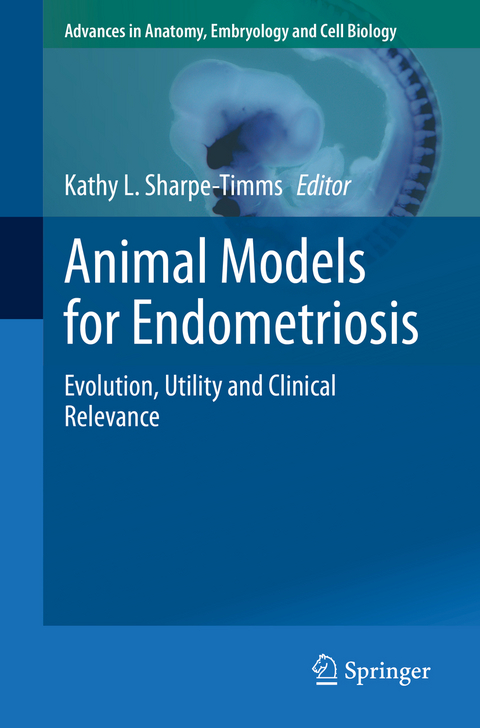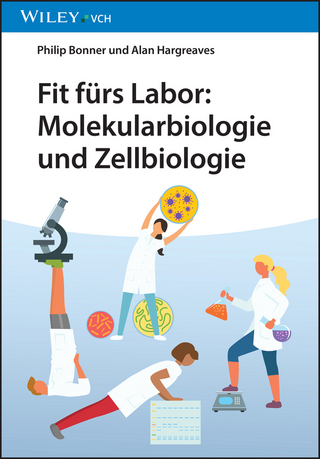
Animal Models for Endometriosis
Springer International Publishing (Verlag)
978-3-030-51855-4 (ISBN)
This new volume of our successful book series Advances in Anatomy, Embryology and Cell Biology focuses on the need for and use of animal models when studying endometriosis. Covering models ranging from rodents to baboons, it explores novel mechanisms involved in the pathophysiology of endometriosis. Topics range from the role of miRNAs and environmental endocrine disrupters to pain and endometriosis-associated subfertility.
Estimated to affect up to 10% of women, endometriosis is a widespread and in some cases debilitating disease. While studies on the pathophysiology of the disease and the development of treatments for endometriosis-associated subfertility are called for, acquiring appropriate tissues from women with and without endometriosis in combination with physiologically relevant in vitro and in vivo laboratory models is an essential aspect. However, control subjects with similar ages, living environments and medical histories, besides endometriosis, are hard to find and attaining suitable human reproductive tissues is linked to an ongoing ethical discussion, especially when studying embryos. Laboratory models like rodent and monkey models are therefore needed to fill the research gap and support hypothesis-driven, randomized, controlled experimental design studies. In this book we highlight the latest developments and findings in endometriosis research using animal models.
The book was written for scientists, physicians and medical students working in the field of reproductive science, and for women with endometriosis.
Dr. Sharpe-Timms received a Ph.D. from The University of Tennessee and completed a postdoctoral fellowship at the University of Kentucky in Reproductive Pathophysiology. She served on the faculty in the Dept. of Ob, Gyn and Women's Health at the University of Missouri (MU), over the past 30 years advancing to Full Professor with tenure. Her research identified proteins synthesized and secreted by endometriotic lesions, first in a rat model and reproducing these results in women with endometriosis. Endometriotic haptoglobin (eHp) blocks peritoneal macrophages from phagocytizing shed endometrial tissue and tissue inhibitor of matrix metalloproteinases-1 (TIMP1) inhibits enzymes critical to tissue remodeling for ovulation. She found transgenerational subfertility in three generations of offspring using a rat model for endometriosis. Her primary funding source was the National Institutes of Health. Dr. Sharpe-Timms' endometriosis research led to over 185 publications, abstracts, and invited oral presentations at National and International meetings. She retired from MU in 2019, now serving as Professor Emerita and collaborating with colleagues.
Chapter 1. Introduction.- Chapter 2. Baboon model.- Chapter 3. Mechanisms of endometriosis-associated subfertility and novel therapeutic approaches discovered using a rat model.- Chapter 4. Animal models for pain or inflammation in endometriosis.- Chapter 5 Environmental endocrine disruptors and risk of endometriosis in mouse models.-Chapter 6. Deciphering the role of miRNAs in endometriosis pathophysiology using experimental endometriosis mouse models.- Chapter 7.Summation and future needs.
| Erscheinungsdatum | 07.01.2021 |
|---|---|
| Reihe/Serie | Advances in Anatomy, Embryology and Cell Biology |
| Zusatzinfo | VII, 111 p. 12 illus., 8 illus. in color. |
| Verlagsort | Cham |
| Sprache | englisch |
| Maße | 155 x 235 mm |
| Gewicht | 238 g |
| Themenwelt | Naturwissenschaften ► Biologie ► Allgemeines / Lexika |
| Schlagworte | Endometriosis • Environmental endocrine disruptors • History of animal models • miRNA • Pain • Subfertility |
| ISBN-10 | 3-030-51855-8 / 3030518558 |
| ISBN-13 | 978-3-030-51855-4 / 9783030518554 |
| Zustand | Neuware |
| Informationen gemäß Produktsicherheitsverordnung (GPSR) | |
| Haben Sie eine Frage zum Produkt? |
aus dem Bereich


